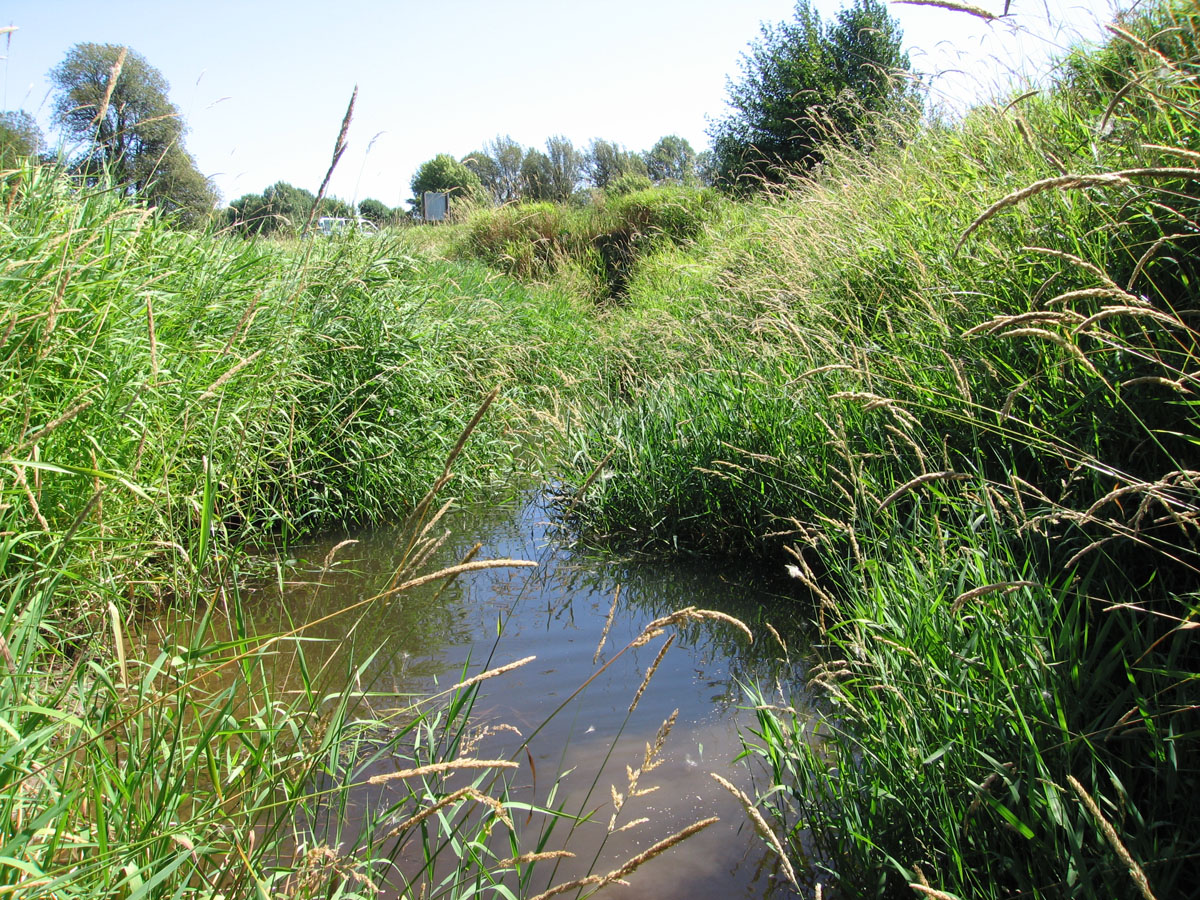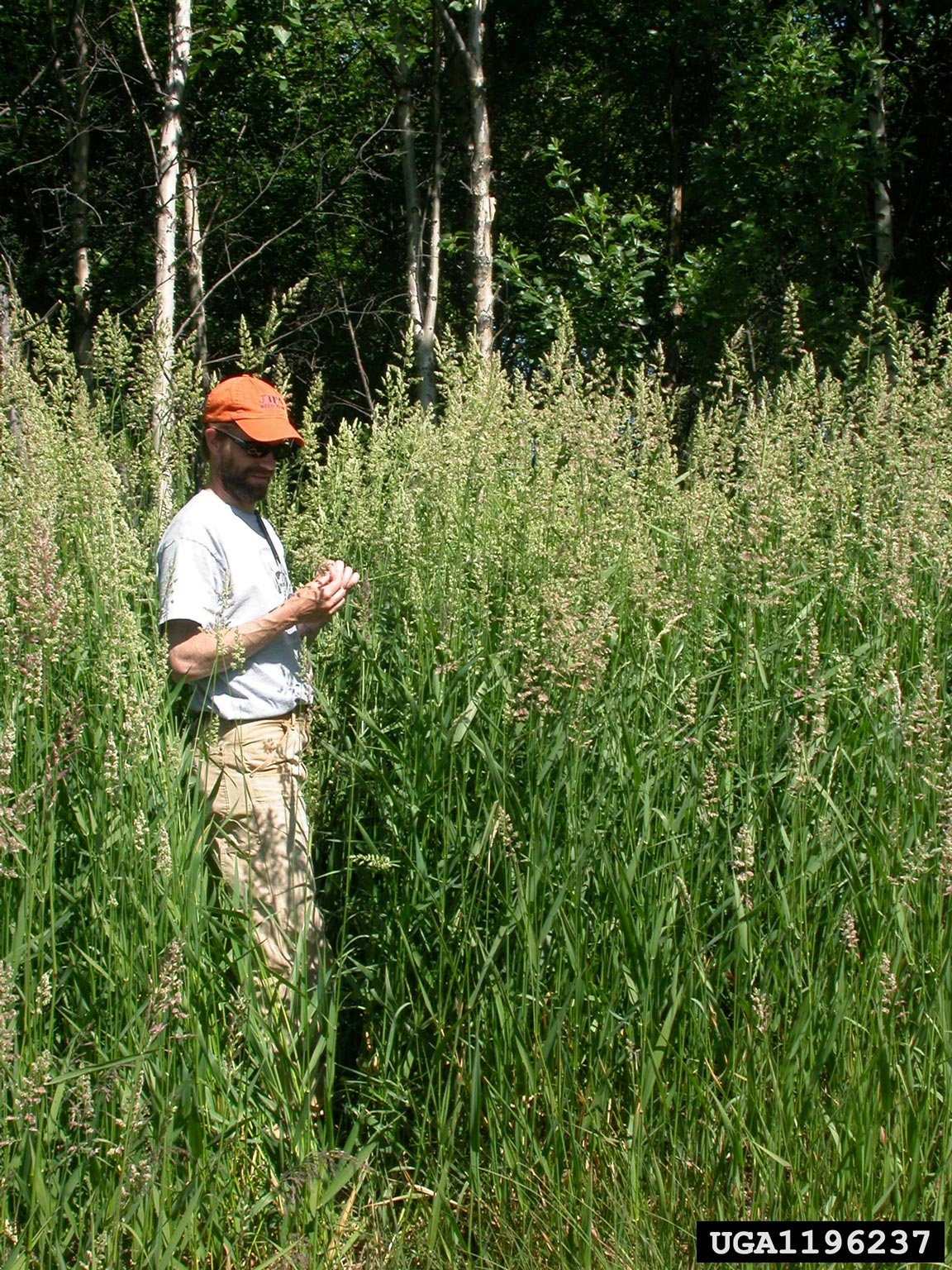
Plant Description
- Perennial, cool season grass
- Flat leaves with no hairs, ¼ to ¾ inch wide
- Light green to pale yellow smooth stems with swollen nodes
- Green to purple flowers from May to July
- Grows up to 6 feet tall
- Prefers full sun and wet soils
- Scientific Name: Phalaris arundinacea
History
Reed canarygrass is native to Europe and some parts of Asia and was likely brought over for livestock forage. It is also used for birdseed.
Spread
Each flower head can produce hundreds of seeds, but this grass also can spread underground with thick rhizomes and aboveground with runners.
Ecological Threats
Reed canary grass is a major threat to wetland ecosystems. It can form dense monotypic stands that outcompete native grasses, perennial plants and other woody riparian vegetation ultimately leaving stream banks unshaded. Rhizomes in dense monocultures form a thick mat that prohibits establishment of other plant species, but does not provide adequate root structure to bind stream bank soils, resulting in erosion.
Streambanks devoid of trees and shrubs dump tons of fine silts and sediments that smother important salmon spawning gravels. Higher water temperatures resulting from a lack of canopy vegetation also adversely impacts salmon habitat.
Control
Mechanical: Mowing prevents development of seed and can reduce resources used by rhizomes for regrowth. Reed canarygrass will resprout from nodes below cutting or from rhizomes. Cutting can help reduce the density of an infestation but will not eliminate it.
Chemical: Herbicide application can control reed canarygrass for up to two years if no other measures are taken to prevent regrowth. If possible, cut grass in the spring to weaken the plant and spray with appropriate herbicides when plant regrows to 16-18 inches tall. Multiple applications may be necessary.
Control could take 2 to 5 years depending on the control method selected, the presence of adjacent stands and whether or not revegetation is a component. Contact our Invasive Species Coordinator by e-mail at [email protected] or call 360-992-8787, for more information on reed canarygrass control.
Current Nationwide and Statewide Distribution
See USDA PLANTS database maps.
Reed canarygrass is considered a Washington State Class C noxious weed and control is recommended throughout the state.
Local Watershed Distribution
Reed canarygrass has been found throughout the Salmon Creek watershed, including the Salmon Creek Greenway.


